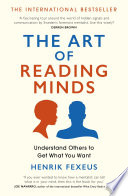

Nonverbal communication encompasses body language, facial expressions, tone of voice, and even silence. The book emphasizes that a significant portion of our communication is nonverbal, making it crucial to pay attention to these cues. By understanding how to interpret these signals, readers can gain insights into others' thoughts and feelings. For instance, crossed arms might indicate defensiveness, while eye contact can suggest confidence or honesty. The author provides practical exercises to help readers become more attuned to these nonverbal signals, enhancing their ability to connect with others. This understanding can improve relationships in both personal and professional contexts, as it allows individuals to respond more appropriately to the emotions and intentions of those around them.
Continue readingEmpathy is a powerful tool in reading minds and understanding others. The book discusses how empathy allows individuals to put themselves in someone else's shoes, fostering a deeper understanding of their experiences and emotions. The author suggests techniques for enhancing empathy, such as active listening and reflective questioning. By practicing empathy, readers can build stronger connections and create a more supportive environment. This idea emphasizes that reading minds is not about manipulation but about genuine understanding and connection. The book illustrates this with examples of how empathetic interactions can lead to better outcomes in negotiations, conflict resolution, and team dynamics.
Continue readingContext plays a critical role in interpreting thoughts and feelings. The author explains that understanding the situation surrounding an interaction can provide essential clues about a person's mindset. For example, stress at work might influence someone's demeanor, leading them to appear aloof or irritable. By considering the broader context—such as cultural background, personal history, and current circumstances—readers can make more accurate assessments of others' behavior. The book encourages readers to ask questions and gather information about the context before jumping to conclusions, thereby improving their ability to read minds effectively.
Continue readingIntuition is described as an innate ability to sense what others are thinking or feeling. The book provides strategies for honing this skill, such as mindfulness practices and journaling. By becoming more aware of their own thoughts and feelings, readers can enhance their intuitive abilities and better understand others. The author argues that intuition is not merely a gut feeling; rather, it can be cultivated through experience and self-reflection. The book includes anecdotes and scientific research that highlight how intuition can lead to better decision-making and interpersonal interactions.
Continue readingAsking the right questions is a fundamental aspect of reading minds. The author emphasizes that questions can reveal underlying thoughts and feelings that may not be immediately apparent. The book provides techniques for formulating open-ended questions that encourage deeper conversations. By asking thoughtful questions, readers can create an environment where others feel safe to express themselves. This idea is particularly relevant in leadership and team settings, where understanding team members' perspectives can lead to more effective collaboration and innovation.
Continue readingTrust and rapport are essential components of effective communication and mind-reading. The book outlines strategies for building trust, such as consistency, transparency, and authenticity. The author explains that when people feel safe and valued, they are more likely to open up, allowing for a deeper understanding of their thoughts and feelings. The book includes practical tips for establishing rapport, such as mirroring body language and finding common ground. By fostering trust, readers can create stronger relationships that facilitate better communication and understanding.
Continue readingThe book concludes with a discussion on the practical applications of mind-reading skills in everyday life. The author provides examples of how these skills can be used in various scenarios, from personal relationships to professional settings. By applying the techniques discussed throughout the book, readers can enhance their interactions, improve conflict resolution, and foster collaboration. The author encourages readers to practice these skills regularly, emphasizing that reading minds is not a one-time effort but a continuous journey of growth and understanding.
Continue reading